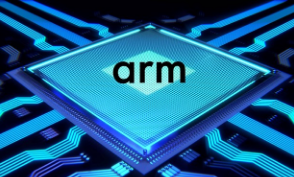- Ameya360 Component Supply Platform >
- Trade news >
- ARM Cores Target AI-powered Future
ARM Cores Target AI-powered Future
ARM plc Monday (May 29) announced its two new application processor cores, the high-end Cortex-A75 and the mid-range Cortex-A55, as part of an ambitious goal to accelerate AI adoption and get an ARM processor core into every IoT device by 2035.
The Cortex-A75 offers performance increases versus previous generations, while the Cortex-A55 delivers both performance and efficiency increases. Both cores come with a level of configurability which makes them suitable for all the Cortex-A family’s markets, in contrast to previous cores which have been optimized for specific applications (for example, the A73 for mobile applications or the A72 for servers).
Both cores are based on ARM’s brand new DynamIQ technology, which the company is heralding as a way to redefine multi-core processing.
“DynamIQ is a fundamental change to the way we build Cortex-A clusters,” said John Ronco, vice president of marketing for the CPU Group at ARM. “There can now be 8 CPU cores in a cluster that are totally different [to each other], different micro-architectures, different implementations, they can run on different voltage domains, at different frequencies... a lot more flexibility has been introduced.”
Previously, with ARM’s big.LITTLE scheme, larger cores could be used alongside smaller cores to allow the smaller ones to be used whenever possible to save power. However, there were limitations: only two sizes of core could be used, and they had to be in separate clusters. They also had to have the same setup for power consumption and performance.
DynamIQ allows a more mix-and-match approach, with heterogeneous core types in the same cluster, that can be configured or optimized differently. It also includes an upgraded memory subsystem to deal with data flowing between the different cores, and a new specific instruction set for AI tasks.
Ronco gave the example of mid-range CPUs in the mobile arena that may previously have used identical cores, such as eight Cortex-A53s -- these setups will likely transition to one big core with seven littles (ie, an A75 plus seven A55s). While this would involve a minor increase in area, it would allow almost double the single thread performance, useful for app start time and other user experience criteria that make a big difference to smartphone applications.
While ARM expects the new cores to be used in a wide variety of applications, a key market for DynamIQ-based CPUs is machine learning. The company’s aim is to accelerate AI adoption by improving core performance by a factor of 50 in the next 3-5 years, based on architecture evolution, new micro-architecture features and software optimizations.
“There is lots of innovation going on in machine learning, but it is not a one size fits all problem,” said Ronco. “There will be lots of types of machine learning, and lots of different solutions. For a whole range of workloads, running them on the CPU is going to make sense, particularly for inference at the edge. What we’ve done with DynamIQ is really pushing forward what can be achieved from a machine learning point of view.”
Online messageinquiry

Arm Grabs Stream for IoT Services

ARM Offloads Chinese Joint Venture Stake

Arm Targets Laptop Performance
- Week of hot material
- Material in short supply seckilling
| model | brand | Quote |
|---|---|---|
| RB751G-40T2R | ROHM Semiconductor | |
| MC33074DR2G | onsemi | |
| CDZVT2R20B | ROHM Semiconductor | |
| BD71847AMWV-E2 | ROHM Semiconductor | |
| TL431ACLPR | Texas Instruments |
| model | brand | To snap up |
|---|---|---|
| BP3621 | ROHM Semiconductor | |
| ESR03EZPJ151 | ROHM Semiconductor | |
| BU33JA2MNVX-CTL | ROHM Semiconductor | |
| TPS63050YFFR | Texas Instruments | |
| STM32F429IGT6 | STMicroelectronics | |
| IPZ40N04S5L4R8ATMA1 | Infineon Technologies |
- Week of ranking
- Month ranking
Qr code of ameya360 official account
Identify TWO-DIMENSIONAL code, you can pay attention to


Please enter the verification code in the image below:























